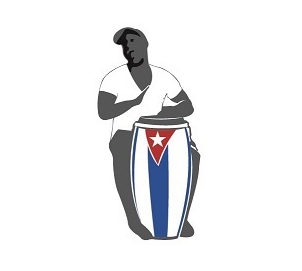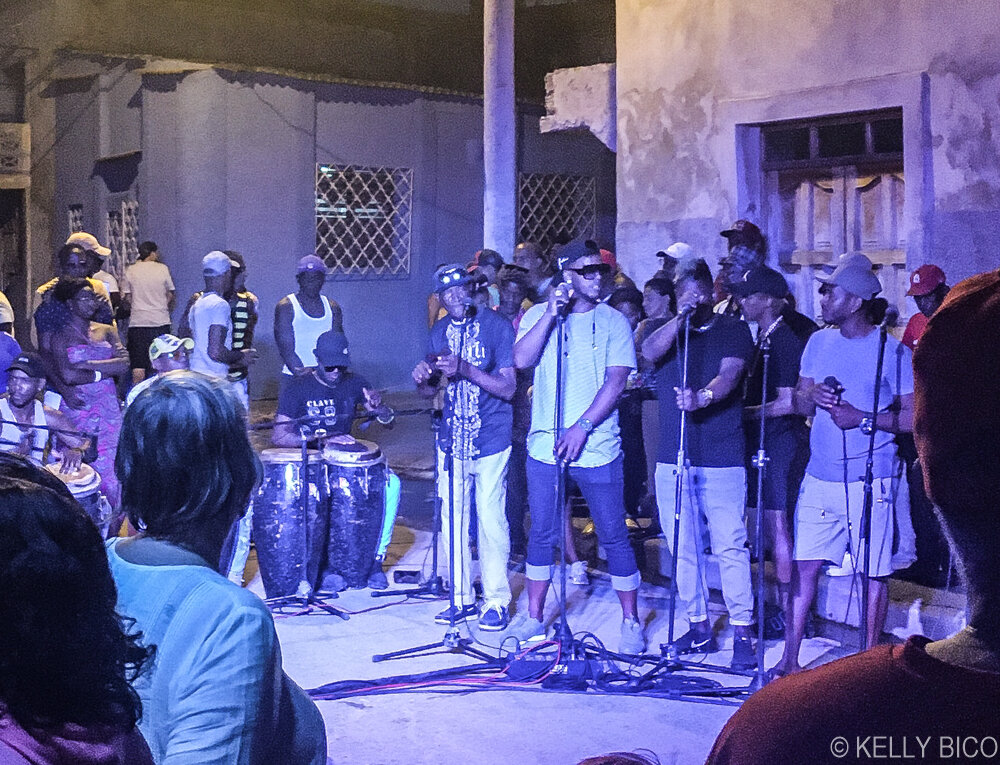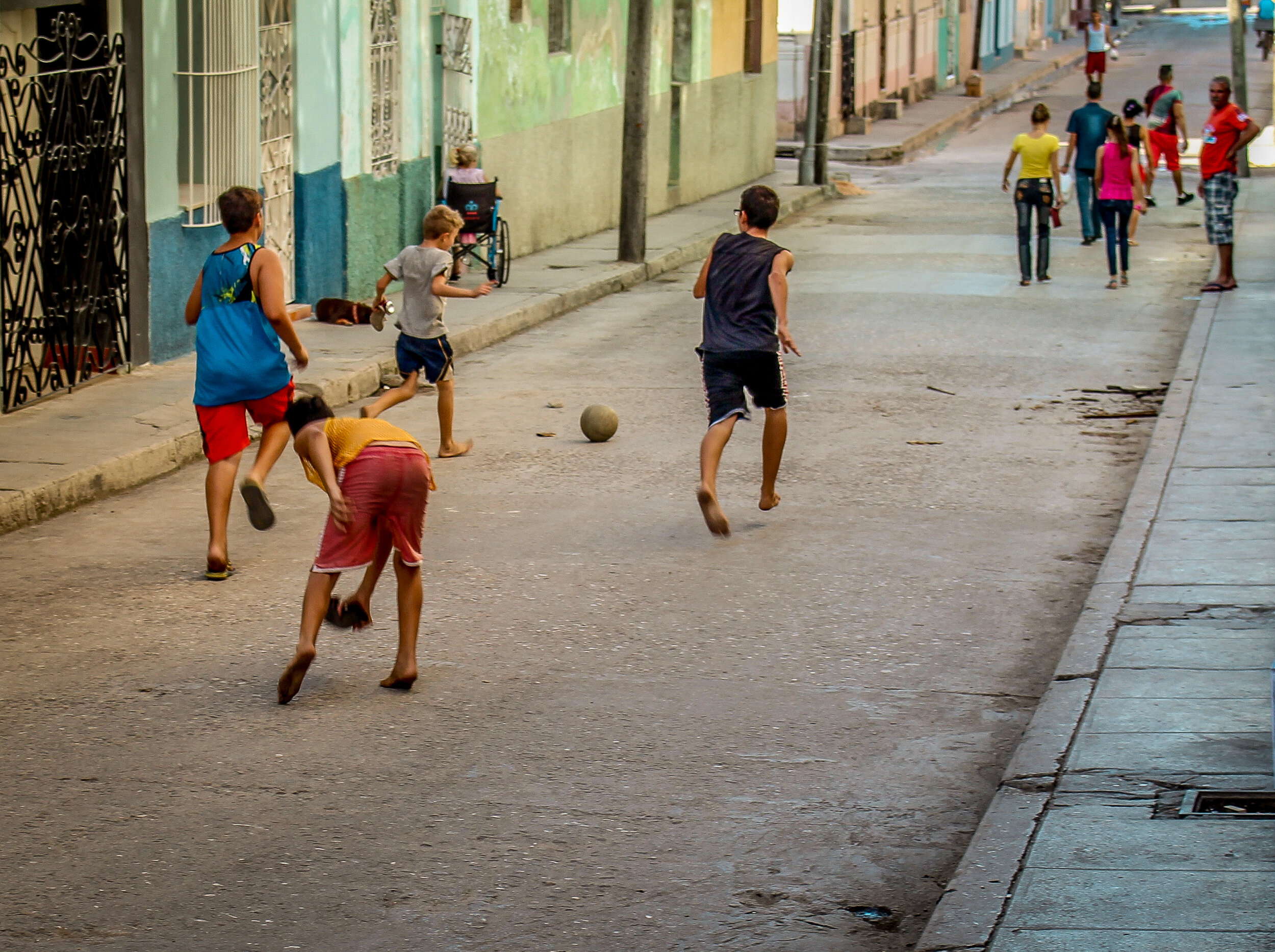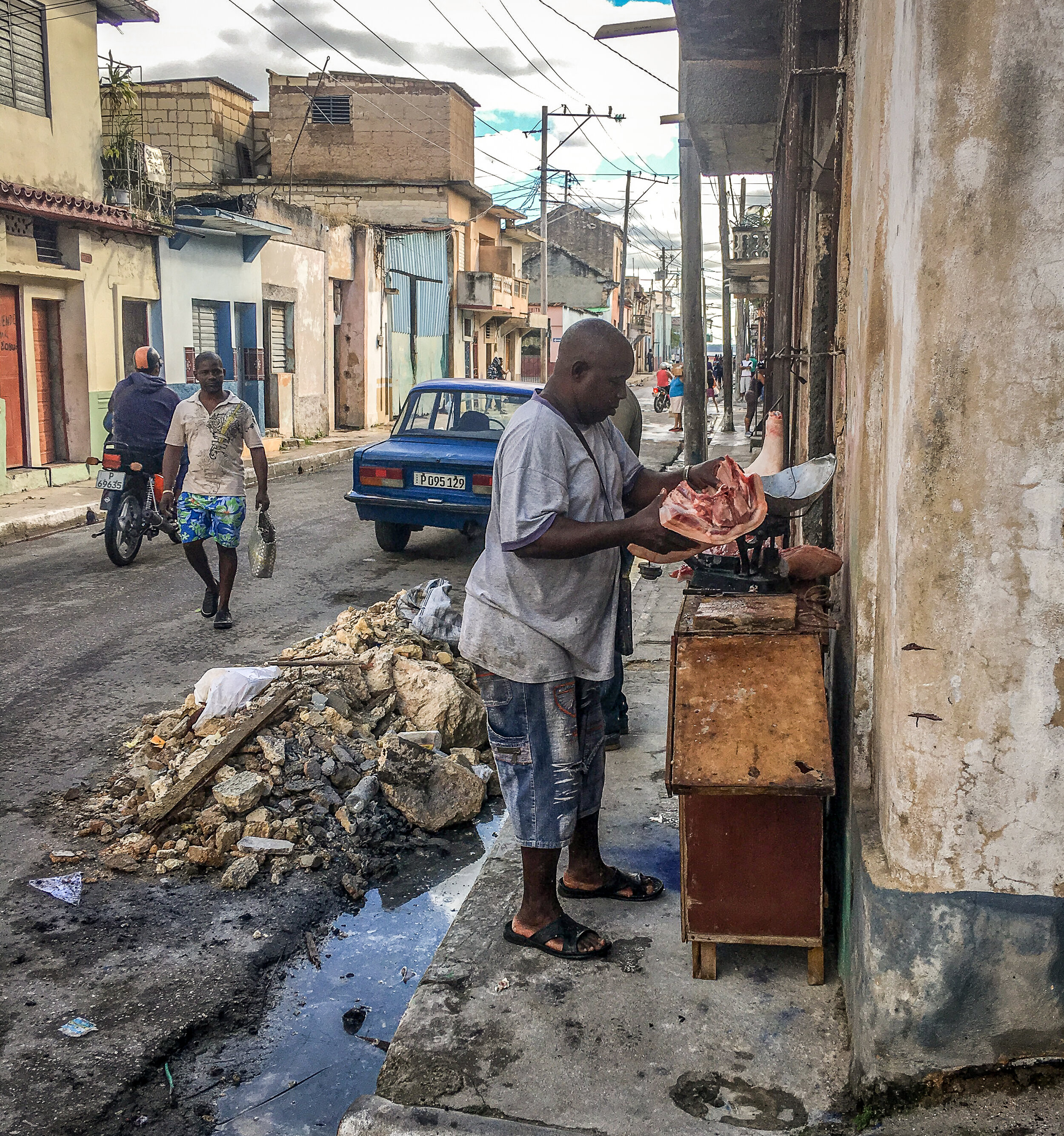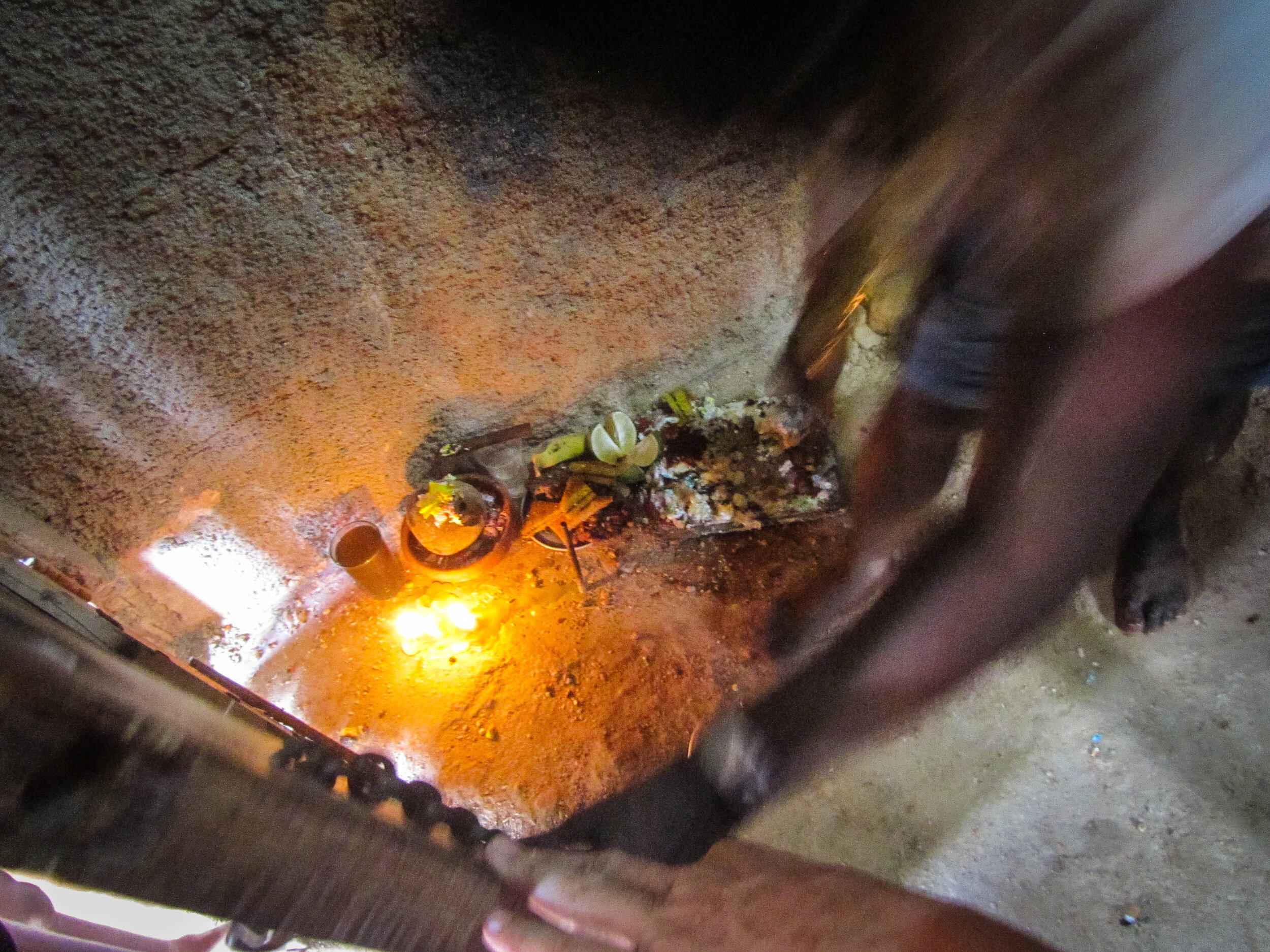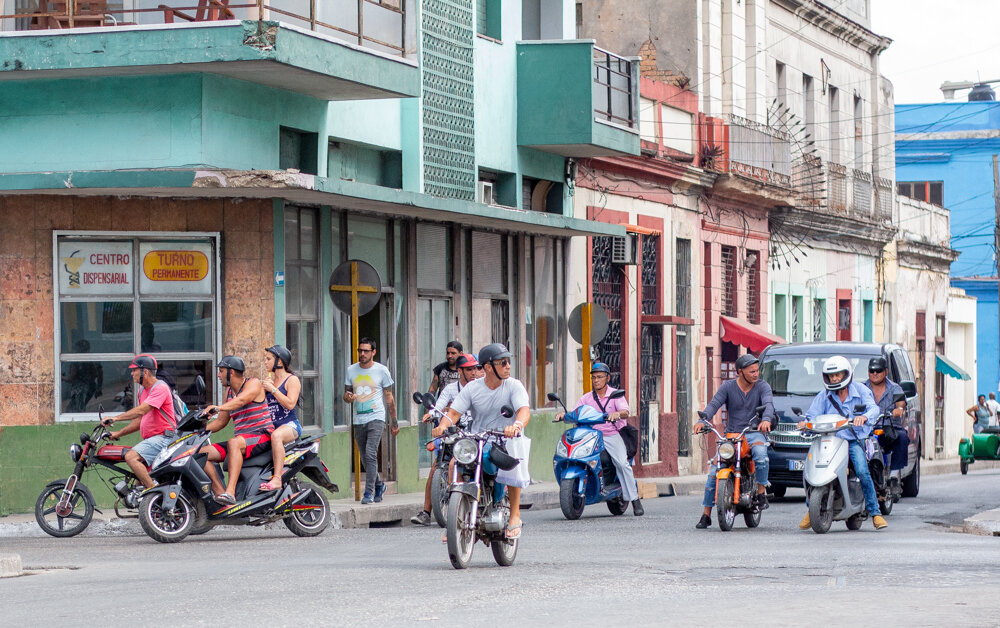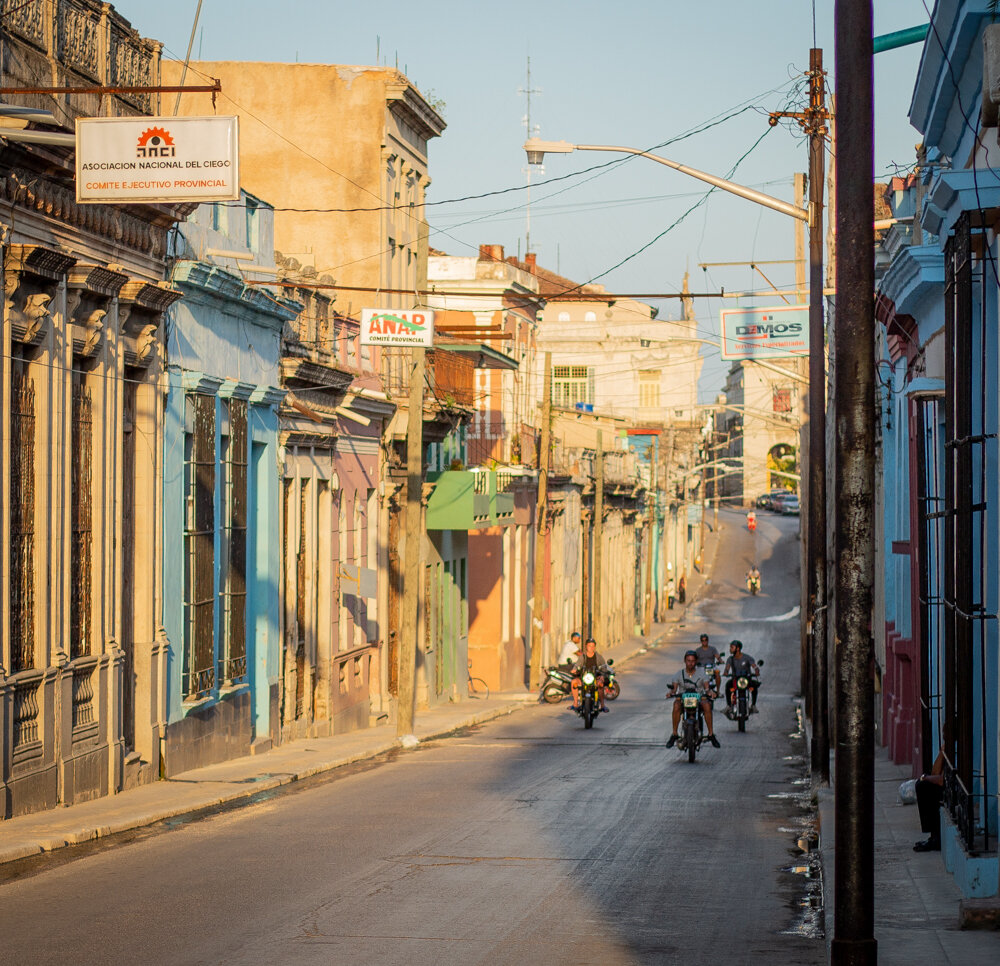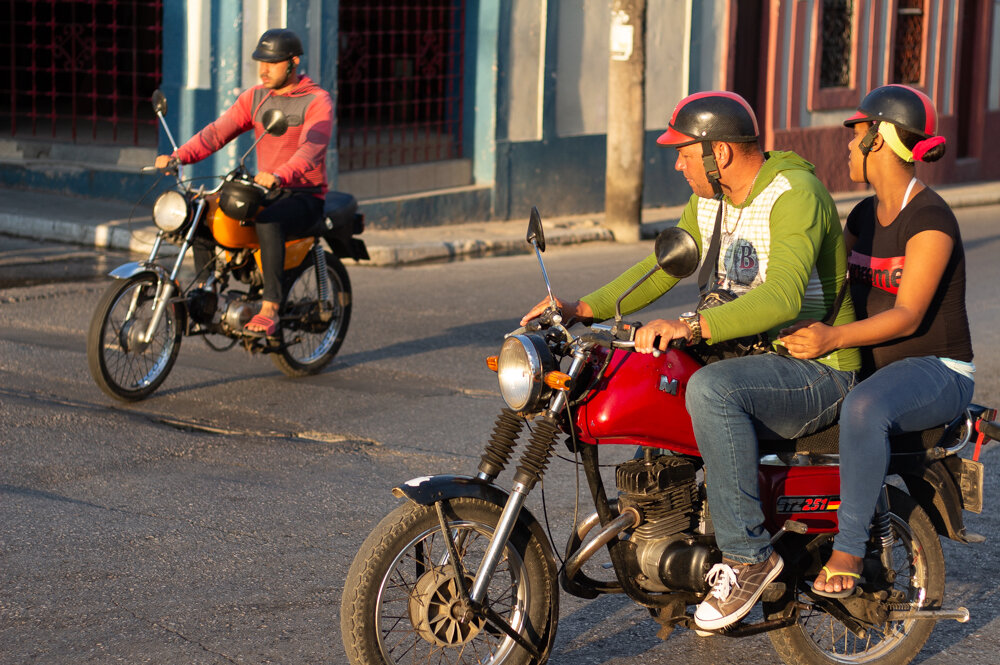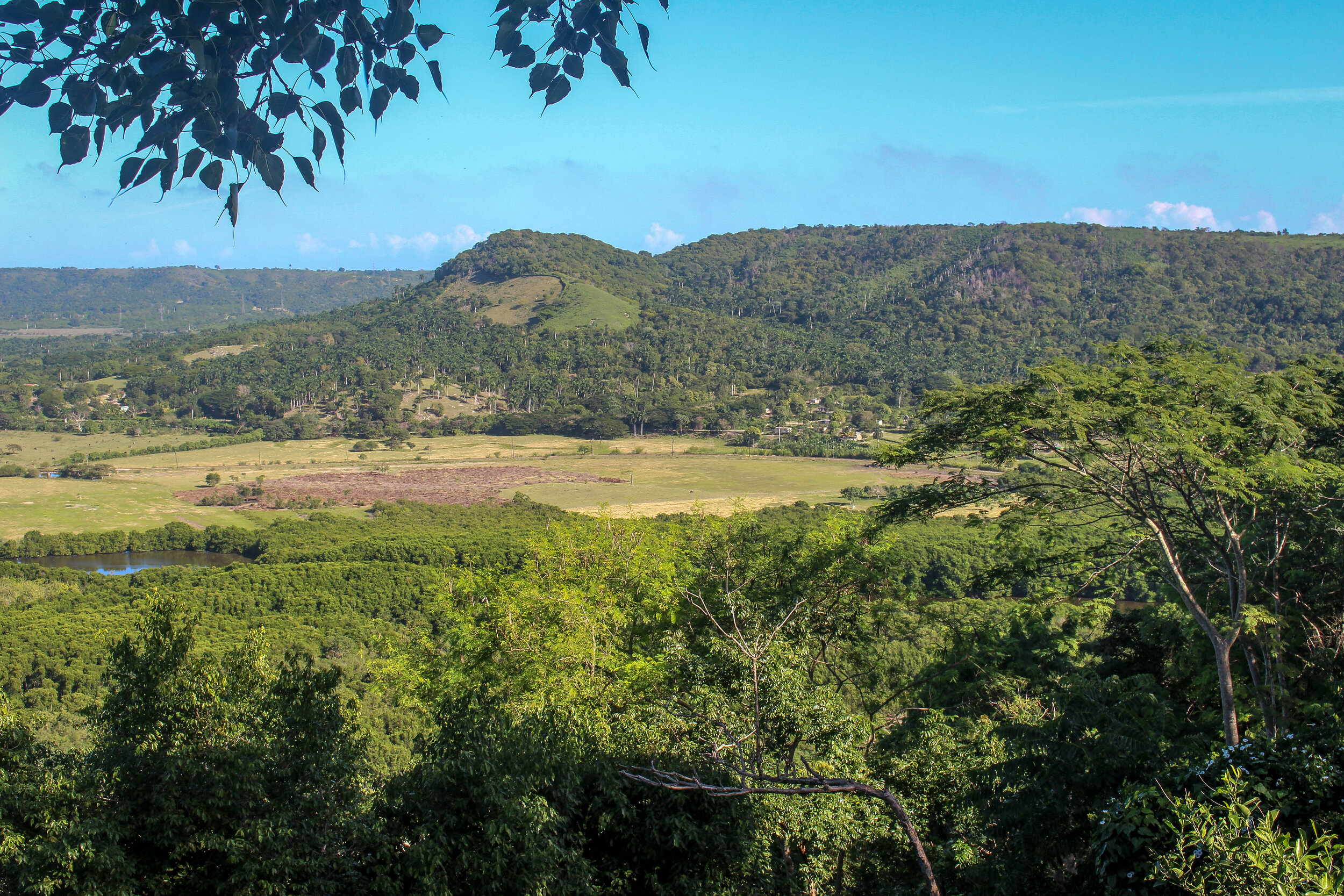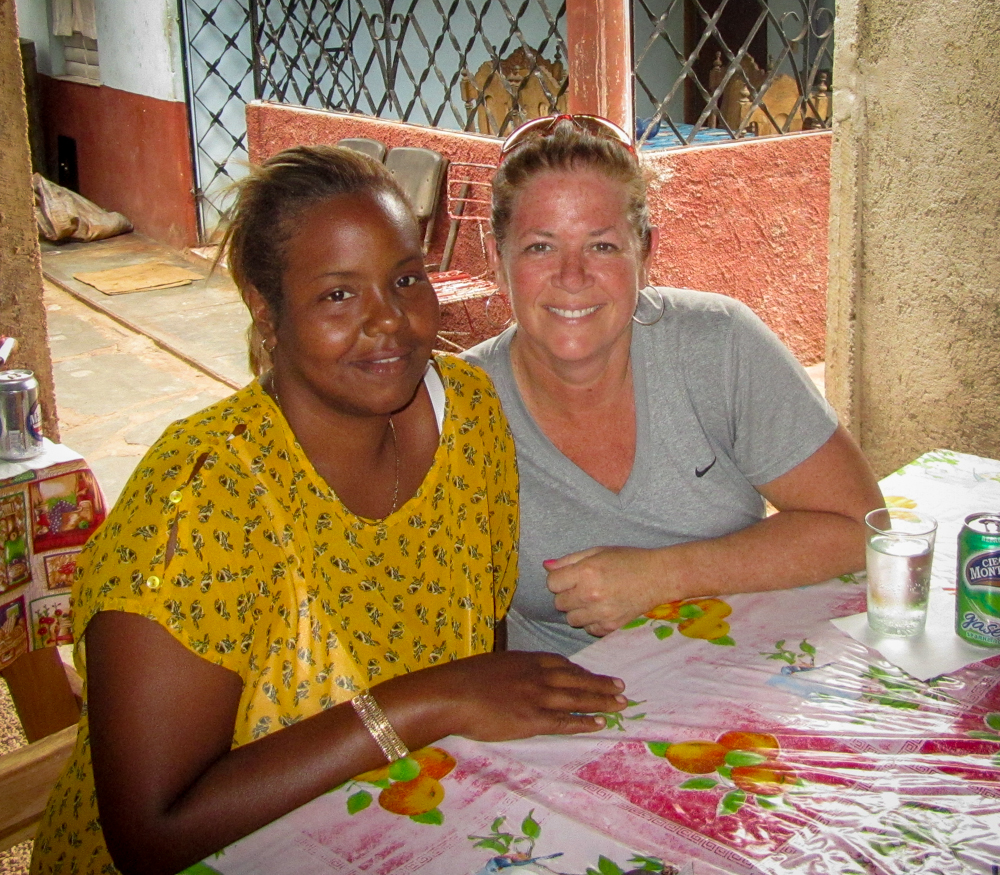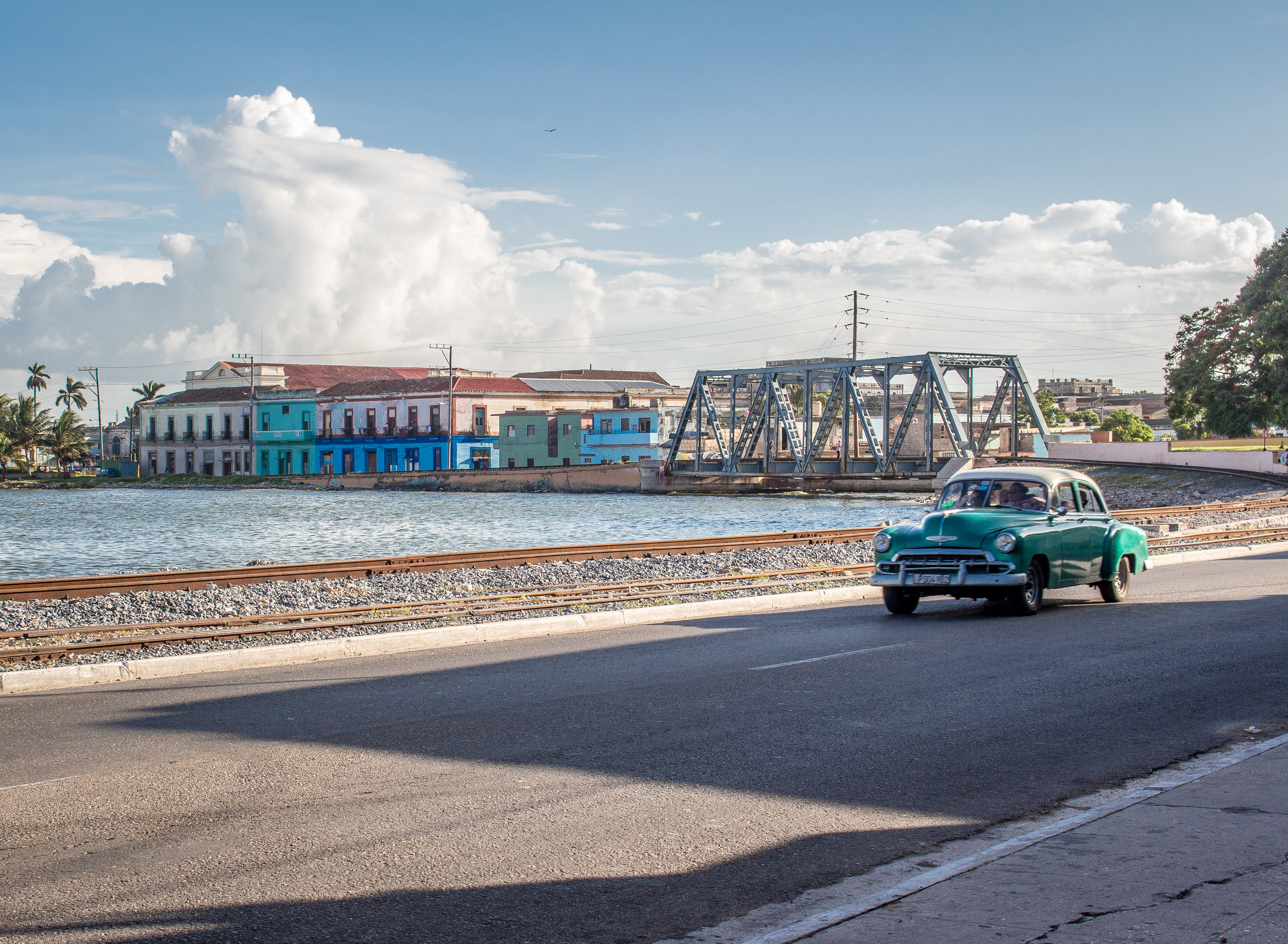
La Marina: A Gritty & Culturally Essential AfroCuban Neighborhood
I confess.
When I initially arrived in Matanzas on my first trip, I couldn’t tell one neighborhood from the next. On the surface, the buildings, streets and bridges all looked the same to me.
Now, after spending time working my way into the fold here, it’s become clear that each one has unique and defining characteristics. Each has their own distinctive vibe. I suppose that’s a testament to the virtues of travelling slowly.
Downtown has a typically noisy urban buzz, with its cars and motos racing around Parque de la Libertad, and its patios alive with music and people. La Playa is the coastal neighbourhood in the east end, with pretty houses perched on rocks lining the bay, and quiet streets where many expats reside. Los Mangos is at the top of the city where you’ll find the absolute best view of the Yumurí Valley, and where it always seems to be 5 degrees hotter than anywhere else in Matanzas.
Then there’s La Marina. It’s the gritty barrio which lies between the main street of Contreras and the Río Yumurí, and where the pulse of AfroCuba resonates loudly and everyday life vibrates at a little higher frequency.
Barbaro, Los Muñequitos de Matanzas
Rhythm
Music is always somewhere in the background in La Marina. Sometimes it’s reggaeton but most of the time it’s rumba, because this is the city and the neighborhood where the genre, based on African music and traditions, originated in the late 1800’s. Cuba’s best-known rumba group, Los Munequitos de Matanzas, resides here on Calle Manzano and they, along with the popular Grupo AfroCuba de Matanzas, frequently perform live in the street. Between the concerts, the batá drum ceremonies and the Santeria rituals which happen regularly, it sometimes seems as though the sound of beating drums, even if it’s only faintly in the distance, is unavoidable.
Artist’s Studio, Michel M.M.
Art
Matanzas, in general, is a force to be reckoned with when it comes to artistic endowment – there are poets, painters, photographers, sculptors and graphic artists galore, not to mention the abundance of performers such as dancers, musicians, mimes and acrobats. La Marina has its share of all of those, something which has become even more evident within the last couple of years. Murals have begun to appear, transforming some of the shabby facades along Calle Daoiz into giant canvases displaying the work of a local painter whose studio is located there. If you’re short on time, this is the one street I recommend you do not skip, especially the area between Calles Jovellanos and Magdalena.
Squalor
There’s no getting around it – sections of this barrio can be straight-up filthy. Down by the bend in the river at the end of Calle Ángel, a chunk of the retaining wall is missing, allowing the water to flood that corner regularly, bringing with it the garbage and debris that collects there. It takes some skill to dodge the mosquito-infested puddles which never seem to evaporate or drain from within a two-block radius of this particular spot. If you’re wearing flip-flops, I recommend avoiding this corner altogether.
Streetlife
More than any others, this is the cultural element bound to make you feel as though you’re part of the local scene. The best time to explore La Marina is after 5pm, when people are home from work, school is out and dinner prep is in progress. You’ll need to bob and weave between the vignettes of activity – the fresh laundry slung overhead, the pop-up domino tables in full swing, barefoot kids playing fútbol and tossing a baseball from one side of the street to the other. This is also the time when you’re apt to find a vat or two of caldoza or chicharrón cooking over an open fire, neighbors chatting in their doorways and abuelas rocking their grandchildren to sleep as they sit by the front window to catch the cool evening breeze.
Nelson Barrera Cultural Centre
Community
One of the most endearing aspects of Cuba is the undeniable sense of community that seems to be present everywhere. People know their neighbors, they help each other, they look out for each other’s children and care for their elderly loved ones. Sharing a common struggle is something that binds a group of people (or an entire island) together, and people tend to struggle just a little more in La Marina than elsewhere in the city. Perhaps that’s the reason why the sense of community seems particularly strong here. With the presence of organizations like the Nelson Barrera Cultural Centre, which promotes an inclusive approach to the maintenance and development of AfroCuban culture, the community is actively engaged in efforts towards making everybody feel like they matter.
As grimy and dishevelled as parts of it may be, there is no denying that La Marina is one of Matanzas’ richest neighborhoods culturally-speaking. Wander it slowly, explore it with open eyes and an open mind. You’ll need this essential piece of the puzzle in order to understand and appreciate the city beyond its surface.
What Drew Me to Matanzas, and What Keeps Me There
The view from the top of Versalles
I could write/talk/listen/think on this subject for hours at a time.
When Sarah from Havana Adventures Day Tours invited me to ‘takeover’ their Instagram account for a few days (to collaborate by way of sharing my own content through their feed), I jumped at the chance.
Here, I string all five entries together, with some minor revisions for the purposes of flow, as a way of highlighting a handful of the most endearing features of this gritty and engaging city.
1. THE HOOK
The thing that initially drew me to Matanzas in 2014 was the fact that it wasn't yet on the map as a place of interest to tourists, but it was easy to get to because of its proximity to both Varadero and Havana. What keeps me going back is the fact that it's so easy to feel like a local there, and the opportunities to connect with local people - to hear their stories, to exchange ideas, to expose yourself to all of the layers of real Cuban life - require almost no effort beyond a simple 'Buen día'. Locals like Armando, working in his family's stone fabricating shop along the Hershey train tracks, are almost anxious to invite you in and not only tell you about themselves and their work, but also to hear about you and your family and your life back home. Matanzas is also very rich in terms of arts and culture, even more so now that the core has been revitalized with a focus on venues for live dance, music and theatrical performances, as well as art galleries and photography exhibits. There is a very large creative community here, which is why it’s often referred to as The Athens of Cuba.
2.THE AFROCUBAN AFFECT
One of my favourite things about Matanzas is the prevalence of AfroCuban elements - not just on display at Castillo de San Severino and the Museo de la Ruta del Esclavo, but actually weaved into everyday life. The city and province played a major role in Cuba’s history with slavery, and that legacy is anchored in its past and present culture. In certain neighbourhoods, it's not uncommon to stumble into a Santeria ritual or a toque (a batá drum session) in progress, and to be invited in to observe or even participate. If you hear drums beating while exploring the streets of this city, make it your mission to find the source - it's a sign that there's something really interesting happening nearby.
3.THE STREETLIFE
One of the most vibrant neighbourhoods to wander through in Matanzas is la Marina. Interestingly, it's also the place that foreign visitors are most often steered away from by some casa owners and others in the tourism industry - they'll tell you it's dirty and unsafe. While it definitely has its 'unhygienic' areas (especially along the river where the decaying breakwall allows water from Rio Yumurí to flood some of the streets), it's absolutely worth exploring . What's most notable about la Marina is how active the streets are, from the cauldrons of caldoza bubbling over open fires in late afternoon, to the multiple tables of dominoes being played at Rumba Park to the locals helping their amigos wrangle a pig en la calle. My advice? Don't skip this neighbourhood - just throw on a pair of closed-toe shoes and slather on a little extra bug repellent before you go.
4.THE MOTO TAXIS
By far, the easiest and fastest way to get around Matanzas is by moto-taxi. The number of motos zooming around this city has seemingly exploded over the last couple of years. It's added to the noise factor in the downtown core but it's also enhanced accessibility to different neighbourhoods, especially those in the hills which are sometimes served by nothing more than a dirt path. And there’s an undeniable sense of freedom that comes from being on a bike which simply can’t be achieved from the backseat of a beaten-up Lada whose windows don’t roll down. The best thing is, all you have to do to flag one down is stand on the sidewalk, make eye contact and nod. Motos are my favourite mode of transportation here, hands down.
5.THE RITUAL
For me, every trip to Matanzas begins and ends with a visit to Ermita de Monserrate - the church on top of the cliff overlooking both the city and the spectacular Yumurí Valley. I remember the first time I walked up to the railing at the lookout point - it literally took my breath away. It still does, every time I'm there. It also happens to be the best place in the city for watching both the sunrise and the sunset. I believe that rituals are one of the keys to meaningful travel. Monserrate is my ritual, where I begin with inhaling the fresh air from the Valley and end with exhaling and reflecting on my time there. It's my happy place.
Loving Cuba is a Love/Hate Thing
I received a message from a friend recently and it got me thinking…sometimes it’s just so difficult to balance the feelings of helplessness and utter disdain I have for the s**t my Cuban friends are forced to live with (food shortages, decaying infrastructure, economic hardship) and the fierce love that I have for the country and all of the positive things that exist there (an exceptional arts & culture scene, spectacular natural beauty and the intestinal fortitude of the people themselves, to name only a very, VERY few).
Daymi and I in Manguito, March 2015
My amigo texted me, not from Cuba but from Chile, to inform me that he’d left the island (legally…I think) to go work in South America for a while, to make some money so that he can support his four children back in Cuba. He doesn’t know when he’ll be able to return, but it’s what he needs to do in order to put food on the table. I’m sappy, so I cried when I imagined him separated from his family for an indefinite period of time. But for him, this is what the locals refer to as ‘la lucha’ (the struggle). It’s not something you cry about -- it’s just something do.
Thankfully, for every story like this, there’s another that shines a light and brings perspective. When I first met my amiga Daymi in 2015, she was living in the small farm town of Manguito where there is almost zero to do and even fewer job opportunities. Not surprisingly, life in rural Cuba is much more difficult than in the city, and she was struggling to support herself and her son. But her desire to achieve something meaningful and to move forward in life propelled her to a much better situation. Today she’s a formally-trained and certified tour guide living near Varadero, she speaks three different languages (I believe she’s working on her fourth), and she’s happier and more vibrant than ever. Considering where she began, she’s a bit of a superstar in my books.
And then, of course, there are times when being in Cuba leads to overwhelming joy – the kind that makes you feel like your heart will explode out of your chest. I was lucky enough to be in Matanzas for the 4th International Dance Festival “Miguel Failde in Memoriam”. I’m accustomed to free concerts in the streets of Matanzas, they happen all the time -- it’s one of the best things about the city. But this was unlike anything I’d seen there before. An entire plaza filled with 1000+ people (not sure of the exact number but I know it was a LOT), all ages, and every single one of them was either dancing or moving their body in some way. It wasn’t just people and music that filled the plaza that night – there was an incredible celebratory energy and a sense of community, two trademark characteristics of every Cuban festival.
If you travel with eyes wide open here (which you absolutely should), it’s sometimes impossible to avoid getting frustrated and downright p***ed at the state of things. But if you know and love Cuba, you also accept that it’s a love/hate thing, and you know that the unwavering Cuban spirit has a way of bringing everything back into check…big time.
